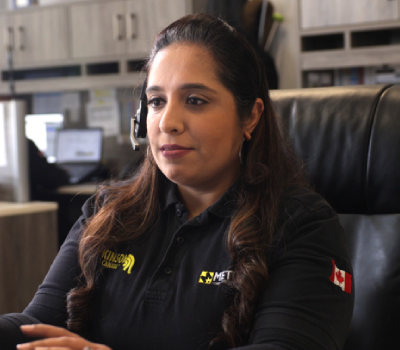Economical Baler Rental for Businesses Taking Care Of Big Quantities
Economical Baler Rental for Businesses Taking Care Of Big Quantities
Blog Article
Exploring the Vital Duty of Waste Equipment in Modern Recycling Processes and Sustainable Waste Disposal Practices
The critical role of waste equipment in modern-day recycling procedures emphasizes its relevance in attaining sustainable garbage disposal methods. Advanced systems, such as automated arranging innovations and compactors, not only boost effectiveness but also play an essential role in lowering contamination rates and improving material recovery. As the demand for more lasting options grows, it is important to check out exactly how these innovations adapt to evolving difficulties within waste administration. What cutting-edge improvements are on the horizon that could additionally change these processes?
Significance of Waste Equipment
Why is waste devices critical in the recycling procedure? The performance of reusing operations hinges substantially on the availability and capability of waste equipment. This category of machinery and tools is essential for the effective collection, handling, and sorting of recyclable products. By facilitating the separation of materials, waste equipment reduces contamination, which is paramount in making sure high-grade recyclables that can be reestablished right into making cycles.
Moreover, waste equipment enhances functional performance and safety and security within reusing centers. Advanced equipment, such as shredders and balers, permits for the quick handling of big volumes of waste, reducing labor prices and processing time. Furthermore, making use of customized devices reduces the risk of injury among workers by automating hazardous tasks.
In addition, the ecological effect of recycling is enhanced by effective waste devices. By enhancing the reusing process, facilities can dramatically decrease the volume of waste sent out to landfills, therefore adding to sustainability efforts. To conclude, waste equipment is not merely a secondary component of reusing; it is an essential aspect that drives effectiveness, security, and environmental stewardship in modern-day waste management techniques.
Kinds of Waste Equipment
The efficiency of reusing operations is carefully connected to the specific sorts of waste tools made use of while doing so. baler rental. Various categories of equipment are indispensable to the collection, sorting, handling, and transport of recyclable materials
Firstly, collection devices, such as waste collection vehicles and containers, is crucial for collecting recyclables from various sources, consisting of residential, industrial, and commercial places. As soon as collected, sorting devices, consisting of conveyor belts, shredders, and magnetic separators, plays a crucial function in distinguishing different product types, ensuring that contaminants are eliminated prior to handling.
Handling devices, such as balers and compactors, further prepares materials for reusing by compressing and packaging them into manageable dimensions. This not only enhances room but also boosts transport efficiency. Furthermore, specialized equipment like granulators and extruders is utilized for transforming materials into recyclable kinds, particularly in plastic recycling.

Function in Recycling Procedures
In recycling processes, the function of waste tools is pivotal in guaranteeing performance and effectiveness at every phase. This equipment includes a variety of machinery developed to take care of, procedure, and More about the author type materials that are to be recycled. The preliminary stage involves collection and transportation, where compactors and balers play a critical function in enhancing the volume of materials for transportation, hence reducing functional expenses.
When at the reusing center, shredders and crushers enter play, breaking down materials into manageable sizes appropriate for additional handling. These equipments contribute to enhancing the surface location of recyclables, promoting extra efficient material healing. Arranging systems, outfitted with sophisticated modern technologies such as conveyor belts and optical sensors, ensure that materials are precisely separated by kind, thereby making the most of the high quality of the recycled output.
Furthermore, specific devices for processing details materials-- such as glass, plastics, and metals-- makes sure that each type is handled in the most effective manner. On the whole, the assimilation of sophisticated waste equipment into the reusing procedure not only simplifies procedures however likewise substantially adds to the overall recovery rates of next page important products, emphasizing its important duty in contemporary recycling efforts.
Effect on Sustainable Practices
Through the effective procedure of waste tools, reusing procedures considerably improve lasting techniques across various sectors. By improving sorting and handling features, advanced waste devices minimizes contamination in recyclable materials, consequently boosting the top quality of recycled outcome.

Moreover, the combination of clever innovations in waste administration systems enables for real-time data monitoring and evaluation, causing even more informed decision-making and operational effectiveness. As industries increasingly focus on sustainability, the duty of waste tools ends up being critical in shaping techniques that straighten with ecological stewardship and regulative conformity. Eventually, the synergy between waste equipment and recycling procedures plays a vital role beforehand broader sustainability objectives across neighborhoods and markets alike.
Future Fads in Waste Administration
Arising trends in waste administration are positioned to reshape the landscape of reusing and source healing considerably. Among the most crucial changes is the combination of advanced technologies such as fabricated knowledge, artificial intelligence, and the Net of Points (IoT) These technologies promote enhanced sorting processes, improving the performance and accuracy of reusing procedures. Smart waste containers geared up with sensors can monitor waste levels in real-time, optimizing collection routes and minimizing functional costs.
Furthermore, the circular economy model is gaining grip, promoting the idea of recycling materials instead of taking care of them. This fad urges organizations to develop his comment is here items with end-of-life considerations in mind, driving the requirement for innovative waste management options.
Additionally, public understanding and engagement in sustainability practices get on the surge, bring about increased participation in recycling programs. Government plans are also progressing, with stricter policies on waste disposal and motivations for lasting methods.
As these fads assemble, they develop an extra reliable, sustainable waste management system that not just lowers ecological impact yet additionally fosters financial growth through resource healing and development in waste equipment. The future of waste monitoring looks promising, driven by technology and a commitment to sustainability.
Final Thought
Finally, waste devices plays a crucial role in enhancing the effectiveness and effectiveness of modern recycling procedures. By lessening contamination and maximizing product healing, advanced machinery supports lasting garbage disposal practices and fosters a round economic situation. The incorporation of wise innovations even more optimizes these initiatives, making sure accountable environmental stewardship. As waste administration continues to develop, the value of ingenious waste tools will certainly stay critical in achieving sustainability objectives and dealing with the challenges of resource depletion.
Report this page